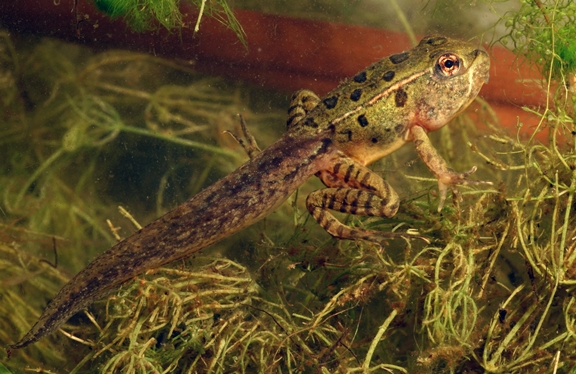Persistent changes in the Earth's climate that have been occurring primarily as a result of human-caused greenhouse-gas emissions since the mid-twentieth century have led to significant increases in infectious diseases in wildlife, both in terms of the sheer numbers of affected animal species and with regard to the severity of disease. In particular, pathogenic bacteria, fungi, viruses, and parasitic worms (helminths) are the predominant organisms finding opportunities to infect novel or additional wildlife hosts in new habitats as climate change gains traction across the globe. Scientists have now correlated the emergence of infectious disease in wildlife populations to instances of both increasing and decreasing climatic temperatures, as well as shifts in precipitation. The risks to wildlife from infectious diseases also depend on the specific pathogenic agent and the degree to which the host animal can adapt to pathogenic threats and concomitant shifts in climate. Disease risks are estimated to be greatest among cold-blooded (ectothermic) and nonmigratory host species, such as amphibians, which have more difficulty adapting to climatic shifts. However, researchers also predict that emergent infectious diseases will become highly prevalent among numerous warm-blooded (endothermic) animals, such as mammals, as parasites move to higher altitudes and more northern latitudes in warming environments as a result of continuing global climate change. See also: Acanthocephala; Amphibia; Bacteria; Climatology; Ecosystem; Fungi; Global climate change; Infectious disease; Mammalia; Parasitology; Pathogen; Virus

Recently, scientists and ecologists studied the emergence of infectious diseases due to climate change among more than 7000 wildlife populations (including 1380 terrestrial and freshwater species). Notably, the development of infectious diseases in wildlife include scenarios of climatic shifts toward either warmer or colder conditions. Specifically, cold-adapted species were at greater risk of infectious diseases when their habitats warmed, whereas warm-adapted species were more prone to infectious diseases when their habitats cooled. Researchers have termed this phenomenon as the thermal mismatch hypothesis, which states that cold-adapted hosts and warm-adapted hosts will experience maximal parasite growth at relatively warm and cool temperatures, respectively. Also, as previously mentioned, the particular pathogen is a determining factor. For example, infectious disease risk due to fungi and viruses rose dramatically under cold abnormalities in warm climates, whereas the degree of bacterial disease increased chiefly under warm abnormalities in cool climates. Parasitic helminths are likely to spread and thrive within warming environments compared to other forms of parasites, endangering the survival of numerous animal species that had been unexposed previously to the pathogens. See also: Adaptation (biology); Disease ecology; Endangered species; Global warming; Species and global climate change
In addition to being detrimental to the affected wildlife species, the surge of disease among wildlife often has dramatic consequences for humans. For example, approximately 75% of all emerging infectious diseases have a zoonotic (animal) origin. The most notable and recent instance is COVID-19. Scientists surmise that bats harbored the viral agent (a coronavirus termed SARS-CoV-2) responsible for COVID-19 before the virus spread to humans, causing a global pandemic. See also: Coronavirus; Novel coronavirus is declared a global pandemic; Zoonoses





